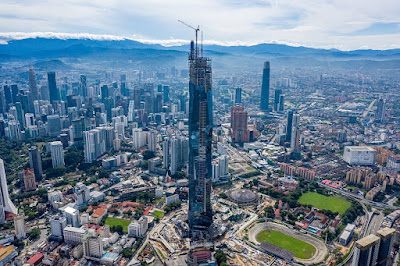Gambling activities actually cause a lot of harm to the participants. But for some people, this is an interesting activity that has many fans. Thousands of people like gambling
If
you are one of them, maybe you are interested to visit these 5 gambling cities
in Asia.
Quoted
from https://urbanasian.com
1.
Macau
The city in the shores of the South China Sea is
intently rivaling Vegas to turn into the fantasy objective of the gambler.
The gamblers have the options to play different types of
games from traditional gambling to the latest trends in the industry such as Texas
Hold ‘Em
2.
Singapore
The premier traveler destination in Asia is also a popular gambling city in the continent. The
administration has adopted relaxed gambling laws to make the city a favorite
place for gamblers. It was an attempt to woo the Chinese gamblers to its
soil. The city houses some famous casino brands like Sands and Resorts World.
Most of these casinos have thousands of gaming tables and slots to offer the
spirit of gaming. Recent years saw the administration blocking several
international online gambling platforms though it encourages in-house gambling.
3.
Manila
The
capital of the Philippines also goes hand in hand with several other East Asian
cities while coming to gambling houses. It has numerous resorts with casinos
and other entertainment options. These resorts provide the gamblers free
breakfast, spas, and many other choices while enjoying casino games. The
casinos in the city offer excellent rewards and give the gamblers numerous card
game options. Asian Poker is a major game that got
exceptional popularity across the casinos in the city.
Apart
from the traditional gambling houses, the country also sees an
exodus of gamblers to bet on UK online gambling sites. Some gamblers love online gambling due to it allows them to access their favorite and the best
casino games without traveling to a casino house. The city has some exotic
locations and welcomes over one million tourists each year.
4.
Seoul
The capital of South Korea is another important gambling
destination for foreigners, not Koreans. The country has adopted a liberal
stand on gambling, and that helped the industry to flourish on the Korean soil.
Though the gambling houses are scattered across the country, a significant
percentage of them are concentrated in the capital. Per the latest information,
there are 23 casinos in the country, and the tourists are only allowed to make
a bet on the tables. However, the government allows the Koreans to make their
bets at Kangwon Land Resort and Casino – a remote casino located in the
northern part of Korea.
5.
Japanese Cities
Japanese cities are
grabbing the spirit of casinos in recent years as the government began
efforts to make its major cities as tourist hubs. The initial two casino
legalization bills for the country passed by the end of 2016, and it is inching
towards becoming the second-largest gambling market in the world. The country
is expected to see an exodus of gamblers in 2018 after the industry gets a
formal policy. The latest developments confirm that the famous gambling
houses around the
globe are eagerly waiting to conquer Japanese soil.
Those are 5 cities in Asia that are
favorite destinations for those of you who like gambling. Welcome
Catatan
:
The
source of the article https://urbanasian.com/entertainment/2018/06/gambling-top-5-beautiful-gambling-destinations-in-asia/
Pictures
are taken from google










































